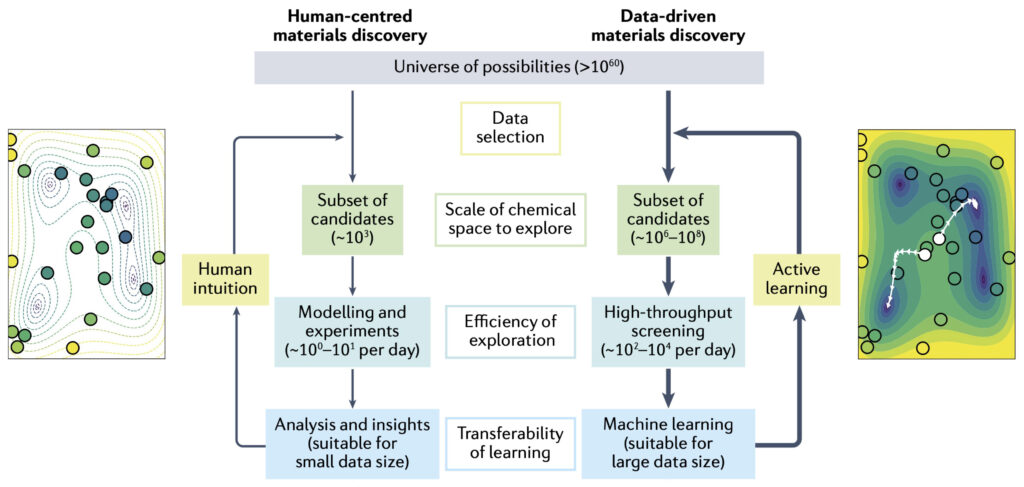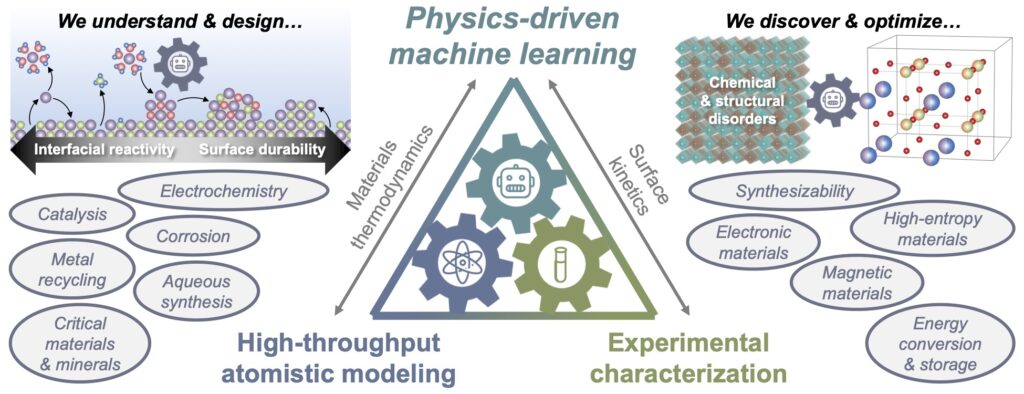Discovering novel materials to transform crucial energy sectors, such as the chemical and materials industries, as well as transportation and aviation, is an essential scientific mission of our time. However, there is no time left for materials discovery as usual, as inventing new materials is a painstakingly slow process using the traditional trial-and-error approach. At the same time, the need for next-generation energy technologies is urgent.

To boost innovation at the AI–energy nexus, our research program aims to combine data science and machine learning with materials physics and surface chemistry to establish physical principles and promote materials discovery for chemical transformation and energy technologies. Particularly, we develop physics-informed, data-driven machine learning methods to capture the fundamental laws of materials thermodynamics and surface kinetics from atomistic simulations and characterization data.

Our research centers on three cross-cutting directions: (1) AI for electronic structure and catalytic reactivity, (2) AI for materials stability and surface restructuring, and (3) AI for disordered and high-entropy materials. Through this program, we empower our group members to develop materials-centric AI solutions to tackle the most urgent societal challenges, e.g., energy poverty, food insecurity, critical minerals, and pollution.
